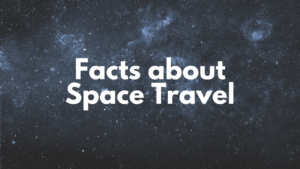
Imagine walking on the uneven surface of the moon, where every step could reveal fresh details on our closest space neighbor. Today we are going to tell you 15 amazing facts about NASA Lunar Navigation Challenge, so sit in your seats.
NASA’s Lunar Navigation Challenge is making people rethink new ideas and create innovative lunar exploration methods.
This challenge fits part of NASA’s bigger Artemis plan, which is to send humans back to the moon and prepare for next Mars missions.
Those undertaking this challenge have to create new tools and maps to let one explore the south pole of the moon and the dark Shackleton Crater. With $50,000 in prizes, it’s about influencing the direction of space exploration as much as about winning.
Here are the 15 amazing facts about NASA Lunar Navigation Challenge:
Facts about NASA Lunar Navigation Challenge No. 1, Part of the Artemis Program:
Aiming to send people back to the moon by 2024, NASA’s Artemis project depends critically on the Lunar Navigation Challenge. This project aims to equip the moon with a long-lasting human presence and get ready for next Mars excursions. This challenge addresses one of the main living issues and concentrates on long-term lunar research.
Though its aim is to send people to the moon, the Artemis project goes much beyond that. It has bearing on launching another phase of space exploration.
Particularly in the challenging surroundings of the south pole of the moon, the tools and concepts learned in the Lunar Navigation Challenge will help astronauts safely and conveniently explore the moon.
Facts about NASA Lunar Navigation Challenge No. 2 Focus on Navigation:
The Lunar Navigation Challenge’s primary objective is to produce creative ideas enabling humans and robots on the moon to find their path. This implies designing systems that, particularly in places with limited mobility, can lead people across demanding surroundings.
On the moon, the ground is rather uneven, the temperatures are extreme, and there is no air; your path is difficult. Lunar exploration becomes safe and simple since the challenge asks people to be creative and generate advanced technologies to solve these problems.
Facts about NASA Lunar Navigation Challenge No. 3: Shackleton Crater:
Near the Moon’s south pole, Shackleton Crater is one significant area of study on the Moon. This crater is intriguing since its dark sections might contain water ice, which would be valuable for next Moon expeditions.
We need unique navigation systems able to operate in low-light and very cold conditions if we are to investigate Shackleton Crater. The aim is to develop technologies enabling safe mapping and movement across this challenging territory, so guiding our discovery of hidden objects in the shadows.
Facts about NASA Lunar Navigation Challenge No. 4: Prize Pool:
The Lunar Navigation Challenge is offering a $50,000 prize to motivate creative ideas. This large incentive is meant to draw brilliant people from all around the globe to create new technologies for better lunar navigation.
The award is not only for money but also for the creativity and clever ideas of those who take part. Maybe helping in next space missions, winning can attract attention and open doors for more opportunities.
Facts about NASA Lunar Navigation Challenge No. 5. Global Participation:
People from all around the world can challenge one by combining several technologies and ideas. NASA wants to employ the knowledge and inventiveness of people from many nations by letting everyone participate.
This open approach facilitates the collaboration of the brightest individuals from many backgrounds on fresh navigation concepts. Important for advancing space exploration is also cooperation and information sharing encouraged by it.

Facts about NASA Lunar Navigation Challenge No. 6: Autonomous Systems:
The answers to this problem should consist of autonomous systems that can negotiate on their own without human assistance. These systems must move across the moon by themselves and make snap judgments.
Exploration of the moon depends on autonomous navigation since it enables missions to operate more safely and effectively under challenging environments. By developing sophisticated systems like these, participants can enable future lunar missions to be more robust and able to handle unforeseen challenges.
Facts about NASA Lunar Navigation Challenge No. 7: Mapping Technologies
Participants are asked to create new mapping technologies to accurately map the moon’s surface. These technologies should make detailed maps that help astronauts and robots move safely on the moon.
Accurate mapping is very important for exploring the moon because it shows safe paths and warns of dangers. The challenge invites participants to make smart mapping tools that give real-time information, making lunar missions safer and more efficient.
Facts about NASA Lunar Navigation Challenge No. 8: Hazard Detection
The navigation systems created for the challenge must detect and avoid hazards like craters, rocks, and other obstacles. This is necessary to keep astronauts and robots safe while exploring the moon.
Hazard detection tools need to be very reliable and work well in the tough conditions on the moon. By creating these advanced systems, participants will help prevent accidents and ensure the success of future lunar missions.
Facts about NASA Lunar Navigation Challenge No. 9: Real-Time Data
Real-time data sent by solutions should let robots and astronauts roam the Moon. This implies showing their whereabouts, any hazards, and the best lines of action.
Real-time data is what astronauts need to make smart decisions as they explore the Moon. Correct and modern knowledge helps missions to remain safe and stop mistakes or delays.
Facts about NASA Lunar Navigation Challenge No. 10: Energy Efficiency
On the Moon, navigation systems have to run on less energy to operate as they should. This suggests the best use of resources and minimal use of power as practically possible.
Lunar missions mostly rely on energy efficiency since it helps systems last longer without much recharging or correction. By means of energy-saving navigation systems, future Moon missions could be more reasonably priced and long-lasting.
Facts about NASA Lunar Navigation Challenge No. 11 Collaboration
The difficulty promotes cooperation among several fields, including robotics, artificial intelligence, and space science. Combining professionals from several domains will help to produce smart and complete navigation solutions.
Space exploration depends on cooperation since it promotes the sharing of knowledge and abilities. Working together, participants can design stronger and more improved navigation systems capable of overcoming the difficult lunar exploration obstacles.
Facts about NASA Lunar Navigation Challenge No. 12: Testing on Earth
To find out how well the proposed remedies perform, they will be tested on Earth in moonlike environments. Among these tests will be elements of the surface of the moon, illumination, and other conditions.
By means of testing on Earth, participants can enhance their technologies and ensure their applicability in the challenging lunar surroundings. By means of meticulous testing, NASA can identify optimal solutions and prepare them for actual lunar missions.
Facts about NASA Lunar Navigation Challenge No. 13: Future Mars Missions
Technologies created for the Lunar Navigation Challenge could also help Mars projects. These cover instruments address navigation, mapping, and hazard identification.
Advancement of human space flight depends on developing technologies for Mars and the moon. The challenge resides in the chance to design adaptable solutions for many space missions.
Facts about NASA Lunar Navigation Challenge No. 14: Educational Impact
Presenting the importance of STEM (science, technology, engineering, and mathematics) in space exploration should hopefully motivate teachers as well as students. It emphasizes how STEM encourages next generations of engineers and scientists to operate in space and aids in the creation of new navigation ideas.
The challenge also interests fresh space enthusiasts and innovators as well as teaches others about space exploration.
also see: Facts about Jupiter | What are Interesting Jupiter Facts
Facts about NASA Lunar Navigation Challenge No. 15: Innovation Showcase
NASA will highlight the best ideas they come across, so appreciating and providing chances for ongoing development. This suggests bringing these technologies into meetings and conferences.
By introducing these effective techniques, one teaches others new lunar navigation techniques. It also lets participants network with business leaders and others, encouraging more innovations and useful applications.
With any luck, this helps you to clear NASA’s Lunar Navigation Challenge. Would you especially like more information on any specific subjects?





